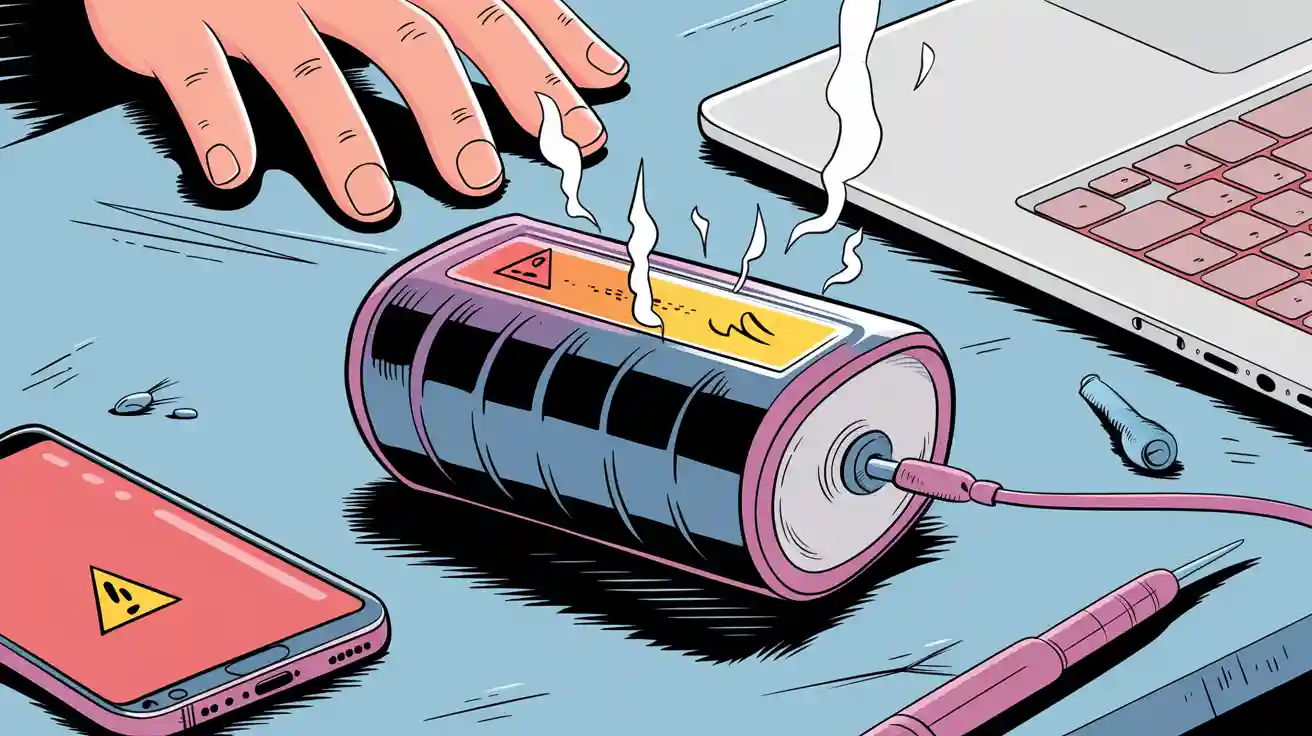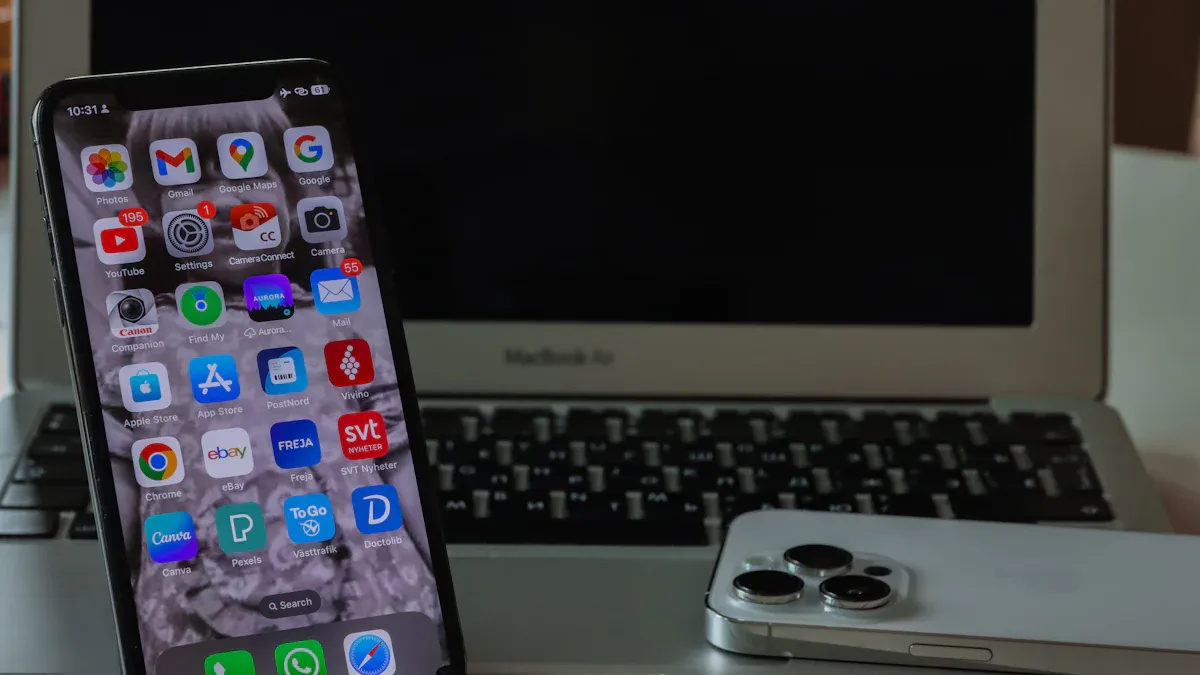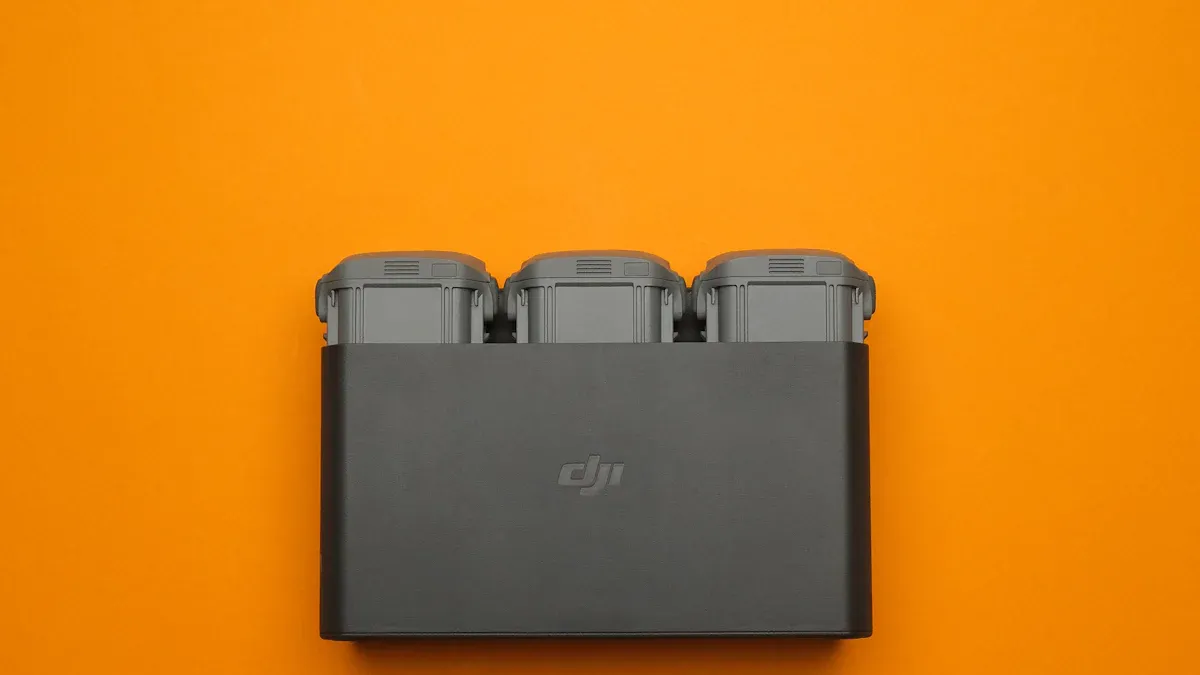
Ignoring a swollen battery exposes your business to significant risks. You may face explosion, fire, or toxic leaks, especially with lithium battery packs. Swollen battery safety requires immediate action. Review the data below to understand the impact:
Battery Type | Incidents | Fires | Damage ($) | Injuries |
|---|---|---|---|---|
Wireless Charging Power Banks | 171 | 39 | 20,000 | 13 |
Lawn Mower Batteries | 100 | N/A | 13,000 | 8 |
You must handle swollen batteries promptly. Learn to identify a swollen battery and prevent further harm.
Key Takeaways
Ignoring a swollen battery can cause fires, explosions, and release toxic gases that harm people and property.
Swollen batteries cannot be fixed and must be replaced immediately to avoid serious safety risks.
Always handle swollen batteries with protective gear and dispose of them through certified recycling programs to protect the environment and comply with regulations.
Part 1: Swollen Battery Safety

1.1 Causes
Swollen battery safety starts with understanding why batteries swell. You often see swelling in lithium-ion batteries due to internal chemical reactions and charging issues. When you overcharge a lithium-ion battery, lithium plating forms on the graphite anode. This metallic lithium reacts with the electrolyte, creating a solid electrolyte interface (SEI) and releasing gases like carbon monoxide, methane, and ethylene. These gases build up inside the cell, increasing pressure and causing the battery to swell.
Manufacturing defects also play a major role. Poor quality control, uneven electrode coatings, and contamination disrupt the chemical balance. Misaligned components and inadequate sealing allow gas to accumulate. Environmental factors, such as high temperatures or mechanical damage, can accelerate these reactions. Even moisture ingress during manufacturing or use can trigger electrolyte decomposition, producing more gas.
Tip: Always monitor charging protocols and use a battery management system (BMS) to reduce the risk of swelling in your lithium battery packs.
Here is a technical comparison of common lithium battery chemistries used in business applications:
Battery Type | Abbreviation | Platform Voltage (V) | Energy Density (Wh/kg) | Cycle Life (cycles) | Typical Applications |
|---|---|---|---|---|---|
Lithium Cobalt Oxide | LCO | 3.7 | 150-200 | 500-1,000 | |
Lithium Nickel Manganese Cobalt Oxide | NMC | 3.7 | 150-220 | 1,000-2,000 | |
Lithium Iron Phosphate | 3.2 | 90-160 | 2,000-5,000 | ||
Lithium Manganese Oxide | LMO | 3.7 | 100-150 | 300-700 | |
Lithium Titanate | LTO | 2.4 | 70-80 | 5,000-20,000 | |
Lithium Polymer | 3.7 | 130-200 | 300-1,000 | Consumer Electronics | |
Solid-State | 3.7 | 200-400 | 2,000+ | Medical, Robotics | |
Lithium Metal | – | 3.7 | 300-500 | 500-1,000 | Medical, Robotics |
You must recognize that all these chemistries, including LiFePO4 and lithium-polymer, are susceptible to swelling under the wrong conditions.
1.2 Swollen Battery Explode Risk
Swollen battery safety is critical because a swollen battery can explode or catch fire. When gases accumulate inside the cell, the pressure can rupture the casing. If the battery vents or bursts, it may ignite flammable gases, leading to fire or explosion. This risk increases in lithium battery packs used in industrial, medical, and security system applications, where high energy density and large cell counts amplify the hazard.
You must also consider the toxic chemicals released during a swollen battery explode event. Major toxic gases include hydrogen fluoride, phosphoryl fluoride, hydrogen, carbon monoxide, and carbon dioxide. Hydrogen fluoride is especially dangerous and requires respiratory protection. Aerosols from a battery fire contain carbon, organic compounds, and transition metals, which can cause severe health effects such as lung irritation, DNA damage, and inflammation.
Alert: Never ignore a swollen battery in your facility. The risk of explosion, fire, and toxic leaks can threaten both personnel and property.
1.3 Irreparability
You cannot repair a swollen battery. The chemical reactions that cause swelling, such as electrolyte decomposition and gas generation, are irreversible. Once a battery swells, the internal structure suffers permanent damage. Attempting to fix or reuse a swollen battery creates a fire hazard and can damage your equipment.
Industry best practices require you to replace swollen batteries immediately. Battery specialists and manufacturers agree that swollen battery cells or modules must be replaced, not repaired. If you cannot restore performance by replacing modules, you must replace the entire battery pack. Swollen battery safety protocols demand prompt removal and safe disposal to prevent further risk.
Note: Always handle swollen batteries with care. Store them in a cool, dry place away from flammable materials, and use certified recycling or destruction services for disposal.
Part 2: Disposal Steps

Immediate Actions
When you discover a swollen battery in your facility, you must act quickly to protect your team and property. Follow these steps to handle swollen batteries safely:
Put on personal protective equipment (PPE), including gloves and goggles, to prevent chemical burns and exposure to hazardous materials.
Place the swollen battery in a metal or hard plastic container. Avoid using soft or flammable materials.
Move the container away from heat sources, flammable items, and high-traffic areas.
If possible, fill the container with a salt water solution to discharge the battery. Watch for bubbling, which signals discharge. Keep the battery submerged for at least three days.
After discharge, dry the battery and check its voltage. If it is not near zero, repeat the process.
Insulate the battery terminals with tape to prevent short circuits.
Arrange for proper disposal through designated hazardous waste pickup procedures.
Alert: Never attempt to remove a swollen battery without protective gear. Direct contact can result in chemical burns, fires, or toxic exposure. Always use gloves and goggles to minimize risk.
Safe Disposal Options
You must dispose of a swollen battery using approved methods. Regulatory agencies classify swollen lithium battery packs as hazardous waste, requiring special handling. You cannot place these batteries in regular trash or recycling bins due to fire and environmental risks.
Take swollen batteries to certified recycling centers or hazardous waste facilities. Many electronics stores offer drop-off programs for damaged batteries.
Use manufacturer take-back programs. These programs provide compliant packaging, safe transport, and expert recycling. Only authorized service centers or certified recyclers should handle large or swollen lithium battery packs.
Package batteries in non-conductive containers, such as sand or kitty litter, and cover terminals with tape.
Store batteries away from heat, moisture, and other battery types until disposal.
For large battery groups in industrial, medical, or robotics applications, consult professional hazardous waste services like NEDT or RETRON GmbH. These providers ensure compliance with EPA, DOT, and ADR regulations.
Note: Improper disposal of swollen batteries can cause fires, toxic leaks, and environmental contamination. Heavy metals and corrosive chemicals may leach into soil and water, harming ecosystems and human health. Always follow government-approved recycling protocols.
If your business requires custom battery solutions or consultation on safe disposal, visit our custom battery solutions page for expert guidance.
You must never ignore the risks of explosion, fire, or toxic leaks from damaged batteries. Replace and dispose of lithium battery packs safely. Establish clear protocols for identification, handling, and disposal:
Remove batteries following manufacturer instructions.
Tape terminals and use certified recycling partners.
Educate employees on safe disposal.
FAQ
1. What should you do if your lithium battery pack swells during operation?
You must stop using the battery immediately. Move it to a safe area. Contact Large Power for custom consultation on safe removal and replacement.
2. Can you reuse or repair a swollen LiFePO4 or LiPo battery group?
No, you cannot repair or reuse swollen LiFePO4 or LiPo batteries. Swelling indicates irreversible internal damage. Always replace the affected battery group to maintain safety.
3. How do you select a disposal partner for industrial lithium battery packs?
Choose certified recyclers with hazardous waste handling credentials. Verify compliance with EPA and DOT standards. Large Power recommends professional partners for Medical, Robotics, and Infrastructure applications.




